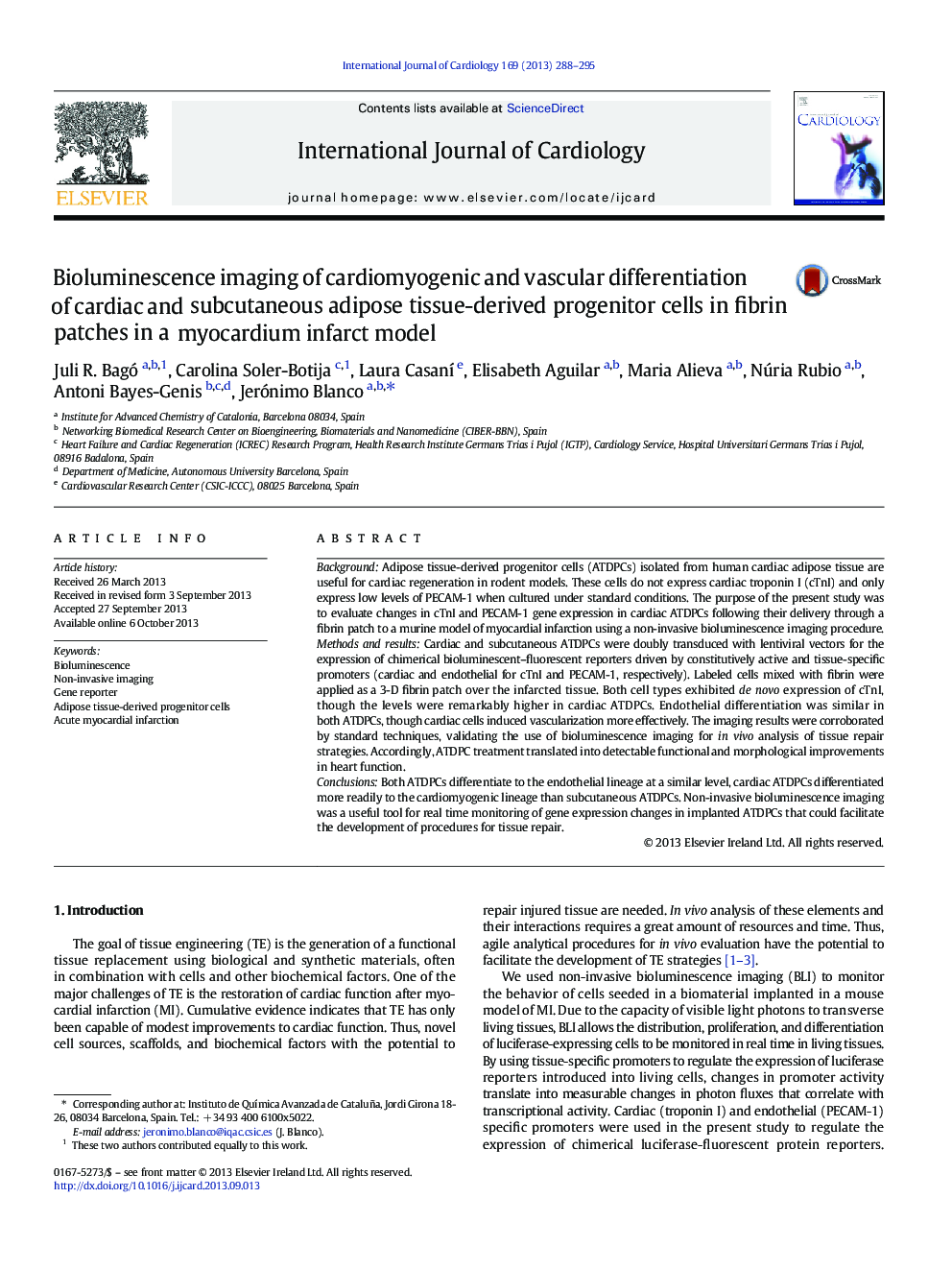| کد مقاله | کد نشریه | سال انتشار | مقاله انگلیسی | نسخه تمام متن |
|---|---|---|---|---|
| 5973991 | 1576202 | 2013 | 8 صفحه PDF | دانلود رایگان |
BackgroundAdipose tissue-derived progenitor cells (ATDPCs) isolated from human cardiac adipose tissue are useful for cardiac regeneration in rodent models. These cells do not express cardiac troponin I (cTnI) and only express low levels of PECAM-1 when cultured under standard conditions. The purpose of the present study was to evaluate changes in cTnI and PECAM-1 gene expression in cardiac ATDPCs following their delivery through a fibrin patch to a murine model of myocardial infarction using a non-invasive bioluminescence imaging procedure.Methods and resultsCardiac and subcutaneous ATDPCs were doubly transduced with lentiviral vectors for the expression of chimerical bioluminescent–fluorescent reporters driven by constitutively active and tissue-specific promoters (cardiac and endothelial for cTnI and PECAM-1, respectively). Labeled cells mixed with fibrin were applied as a 3-D fibrin patch over the infarcted tissue. Both cell types exhibited de novo expression of cTnI, though the levels were remarkably higher in cardiac ATDPCs. Endothelial differentiation was similar in both ATDPCs, though cardiac cells induced vascularization more effectively. The imaging results were corroborated by standard techniques, validating the use of bioluminescence imaging for in vivo analysis of tissue repair strategies. Accordingly, ATDPC treatment translated into detectable functional and morphological improvements in heart function.ConclusionsBoth ATDPCs differentiate to the endothelial lineage at a similar level, cardiac ATDPCs differentiated more readily to the cardiomyogenic lineage than subcutaneous ATDPCs. Non-invasive bioluminescence imaging was a useful tool for real time monitoring of gene expression changes in implanted ATDPCs that could facilitate the development of procedures for tissue repair.
Journal: International Journal of Cardiology - Volume 169, Issue 4, 15 November 2013, Pages 288–295
